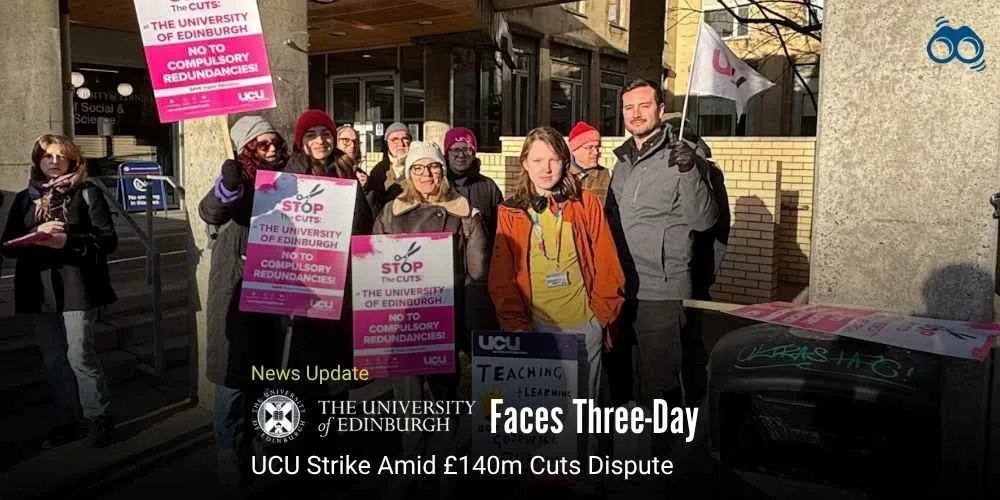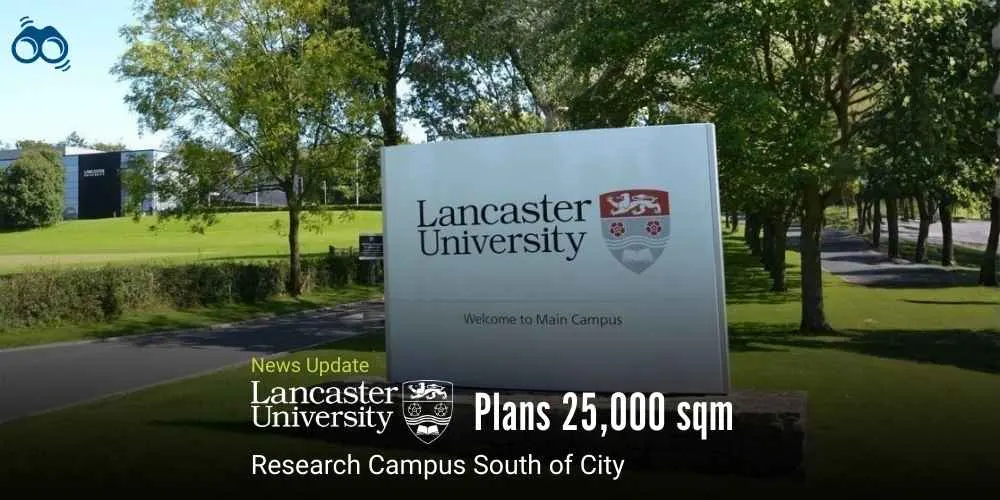Financial Pressures Across UK Universities Raise Questions of Safety, Rights, and Public Interest
Student Activists Protest Against Cuts and Financial Links to Gaza
The University of Edinburgh is undergoing a number of challenges that have seriously questioned its academic stability as well as its financial future. Mounting budget pressures and growing unrest among staff and students have brought the institution under even closer scrutiny. Earlier this term, students blockaded the Old College entrance, protesting as part of the Edinburgh University Justice for Palestine Society against the university’s financial ties to companies linked to the Gaza conflict and against proposed cuts. Reflecting wider dissatisfaction across campus, it highlighted issues of fairness, rights, and public interest.
This coincides with strikes now being taken by staff regarding the planned cuts of £140 million announced in February. The University and Colleges Union (UCU) warns that those cuts could endanger the jobs, mainly of lecturers and support staff, of up to 1,800 through compulsory redundancies, non‑renewal of fixed‑term contracts, or reduced hours. Staff are clearly angered, evidenced recently by an 86 per cent vote from the membership in favour of strike action, reflecting their severe discontent regarding current job security and employment procedures.
Response of the Union
Branch president Sophia Woodman stated that staff were “angry” and warned that unless management returned to the negotiating table, the dispute could escalate to a full marking and assessment boycott. She argued that senior management should commit to no compulsory redundancies and accept the union’s standing open offer of meaningful negotiations. According to the union, staff were being asked to work without assurance over their long‑term future, thereby leading to an erosion of fairness and safety in employment procedures.
University Position
Principal Professor Peter Mathieson indicated that the institution was adopting a “responsible approach” to securing its financial future. He noted that it was necessary to take decisive action at an early stage and commented that disruption to students would be kept to a minimum. He also pointed out that these financial pressures are not unique to Edinburgh, as other universities in the UK are experiencing similar difficulties.
Broader Context
The latest walkouts followed industrial action in the summer and September, all part of an ongoing chain of industrial action termed “action short of a strike”, which has been ongoing since last June. It reflects the financial strain across higher education in the UK, with many universities attempting to meet budgets while safeguarding student rights and maintaining public trust.
Public Interest and Conclusion
This shows the tension between financial sustainability and the protection of staff rights. The strikes also raise issues for students in terms of safety, fairness, and disruption in teaching and assessment procedures. In the broader public interest, this illustrates how universities across the UK are required to balance their financial viability against credibility and trust. The outcome of negotiations at Edinburgh will serve as a test of how institutions manage financial challenges while preserving staff security and student experience.
Editor’s Note:
What is currently happening at the University of Edinburgh is the type of strike and protest that may appear temporary, but in reality leads to deeper discussions about how the institution intends to secure its stability and financial future. The continuing reduction of staff will eventually lead to the loss of experienced lecturers and support staff, which will have implications for the quality of teaching and research outcomes. For students, recurring strikes and protests could undermine confidence in learning within a safe, fair, and stable environment. Longer‑term challenges have the potential to damage the university’s reputation and make recruitment more difficult in future, whether for students or staff. Such financial strains are not unique to Edinburgh, but the university’s response will shape how it is viewed by the public and the wider higher education sector. Some solutions could ease the situation. Senior management should engage in substantial talks with staff unions to rebuild trust. Clearer commitments to minimising compulsory redundancies could reduce anxiety and preserve morale. Staff and students alike should be able to understand why changes are necessary through greater transparency about financial decisions. Cost‑saving measures must also be balanced with investment in teaching and student support to maintain quality.
Skoobuzz notes that the institution must uphold fairness and rights to security alongside financial sustainability. The outcome of negotiations at Edinburgh should serve as a test of how universities meet their financial challenges without compromising the security of their staff and the experience of their students.
FAQs
1. What is the reason behind the strike action at the University of Edinburgh?
The strike was triggered by planned cuts worth £140 million, announced in February to address severe financial pressures. The University and Colleges Union (UCU) has warned that up to 1,800 jobs could be lost, including lecturers and support staff, through compulsory redundancies, non‑renewal of fixed‑term contracts, and reduced hours.
2. How have staff and unions responded to the proposed cuts?
UCU members voted strongly in favour of strike action, with 86% backing walkouts in a recent ballot. Union leaders have demanded that senior management commit to no compulsory redundancies and engage in meaningful talks. They argue that staff are being asked to work without clarity over their long‑term future, undermining fairness, safety, and employment procedures.
3. What has the university’s leadership said about the dispute?
Principal Professor Peter Mathieson stated that the institution is taking a “responsible approach” to secure its financial future. He emphasised that decisive action is necessary to prevent greater challenges later and noted that disruption to students would be kept to a minimum. He also remarked that these financial pressures are not unique to Edinburgh, as universities across the UK face similar difficulties.
4. How are students and the wider community affected?
Students face disruption to teaching and assessment procedures, raising concerns about safety, fairness, and rights in higher education. The dispute has also coincided with wider unrest, including protests by the Edinburgh University Justice for Palestine Society, which blockaded Old College to oppose both the cuts and the university’s financial links to companies connected to the Gaza conflict.
5. What are the wider implications for higher education in the UK?
The situation at Edinburgh reflects broader financial strain across UK universities, where institutions are struggling to balance budgets while safeguarding student rights and maintaining public trust. The strikes highlight the tension between financial sustainability and the protection of staff rights, raising questions of credibility and public interest across the sector.
6. What future steps are possible to resolve the dispute?
The union has warned that the dispute could escalate into a full marking and assessment boycott unless management returns to negotiations. Possible solutions include:
Open dialogue between senior management and staff unions.
Clear commitments to minimise compulsory redundancies.
Transparent communication of financial procedures.
Balancing cost‑saving measures with investment in teaching and student support.
The outcome of negotiations at Edinburgh will serve as a test case for how UK universities manage financial challenges while preserving staff security and student experience.














0 Comments (Please Login To Continue)